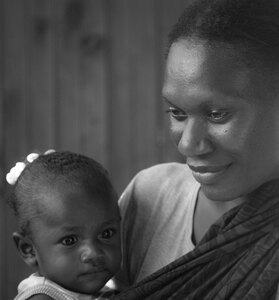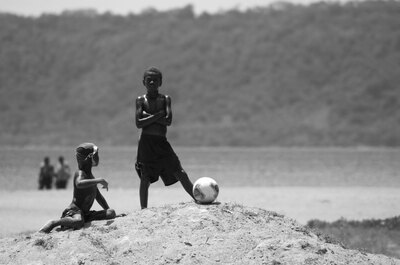Aspiring photographer? Trying to make an impression on an online world with your nascent mastery of a century-old craft? Allow a fellow neophyte to offer a few words of advice.
Not all photographers have the time, opportunity or, heck, the money to take those seriously WTF, how-did-you-DO-that, I-will-see-the-world-differently-because-of-this kind of shot. Sadly, such moments are relatively rare. You may yet have your chance to blow the world away with your incandescent, visionary imagery. But in the mean time, here is a quick primer to help you put your own special genius into perspective.
Shots We Have Already Seen
This may come as a shock, but others have taken photographs before you. Some of them were very talented. Among the shots we have already seen:
- The water droplet
- The water droplet on a blade of grass
- The water droplet on a blade of grass with a distorted reflection of something visible deep inside. (Tragically for you, the visual metaphor of Worlds Within has indeed been considered once or twice before.)
- The blade of grass, without the water droplet
- The forced-perspective skyscraper
- Two forced-perspective skyscrapers
- Forced-perspective anything, actually
- The reflection in the window
- The distorted reflection in the rainy window
- The staircase (It turns out there are several spiral staircases in the world. They have, alas, all been photographed before. Yes, even that one.)
- The beggar
- The self-conscious hipster made edgy and cool by rotating the camera 30 degrees
- Someone blowing smoke in a dimly lit room (Did you know this happens sometimes in bars? What brave new world is this, indeed.)
- Footprints (in anything, leading anywhere)
- Sunset
Shots We Didn’t Want To See In The First Place*
- Your pet
- Your girlfriend
- Your child
- Your street
- That old farmhouse
- Grass
- That tree (not even at sunset)
* Don’t get we wrong. I’m sure your family and friends would love to see a well-taken shot of any of the above, but unless your date is truly unique, your pet looks like this or you have the skill to capture your child in a moment like this, we’d all rather you didn’t foist them on us for comment. After all, we hardly know you.
Shots Which Had Better Be Really Fucking Good Before You Even Consider Showing Them To Others
- The long-exposure shot that makes the water seem all misty
- The long-exposure anything, actually
- The topiary
- The insect. Yes, really.
- The strangers sitting on the bench (Astoundingly, again, others have discovered this useful metaphor for social dysphoria. )
- The high-speed exploration of liquid dynamics
- The reflection in the water
- The distorted view through the glass
- The vista of boats on water
- The shot of birds in flight
- The fisheye shot
- Silhouettes
See, we don’t mind seeing these. They’re kinda cool. But you might want to think twice before crowing about them. The examples above are just a small sample of the stuff found on one website in about one month.
Things Which Are Never Tasteful, No Matter What
- Watermarks (Seriously, if someone can’t immediately identify your photos from their own inimitable style, then a watermark isn’t going to help you. And no, cursive text does not make it all right.)
- Women in bad makeup
- Women on the railway tracks (I mean, seriously: Dude, what?)
- Actually, nude women sitting anywhere they wouldn’t normally sit, if you hadn’t paid them*
- More than two shots of any one thing (Remember: Shake it more than twice and you’re playing with it.)
- Shots of your camera (especially if you’re holding it.)
- Models who have been painted all one colour
- Saturation. It is the photographer’s ketchup. Use it accordingly.
- The one-colour wash (Guys, seriously, that sepia tone was an artifact of the chemical process required to develop the film. It does not make your model look hotter.)
- The single colour element of an otherwise monochrome shot. (Shit, even the banks don’t use this in their ads any more; that’s how cliché it’s become.)
- Captions that say what’s in the model’s thoughts (This goes double when the model is your pet.)
- Tragically, wedding shots. Don’t know why. They just never are. Ever.
* Okay, on rare occasions, nude women in strange postures are genuinely beautiful. But are they more beautiful than normal postures, really?
Shots We* Actually Do Like To See, Really (Provided You Possess Any Skill At All)
- Straight up, simple portraits of normal people busy living their lives
- Ordinary things and moments
- No, really – ordinary things
- Dead things (Not to be morbid, but the opposite of pretty is often fascinating.)
- Really, really simple compositions
- Symmetry
* By ‘we’, of course I mean ‘I’. Shyeah…
Shots That Will Be Popular*, Whether You Do Them Well Or Not
- Young women
- Two women touching or nearly touching
- Children
- Pets, especially cats
- Baby animals
- Children
- Shiny, especially red and gold
* These are all things we’re wired to stare at, and which can get you far in terms of popularity, until you discover that this hasn’t necessarily made you a better photographer. Then again, they’ve made you popular, so who cares?

 In case you haven’t noticed, I’ve been on
In case you haven’t noticed, I’ve been on 